[Newsmaker] Police investigate after Gyeongbokgung walls vandalized
Police tracking suspect of 44-meter graffiti vandalism at Seoul palace
By Hwang Dong-heePublished : Dec. 17, 2023 - 15:25
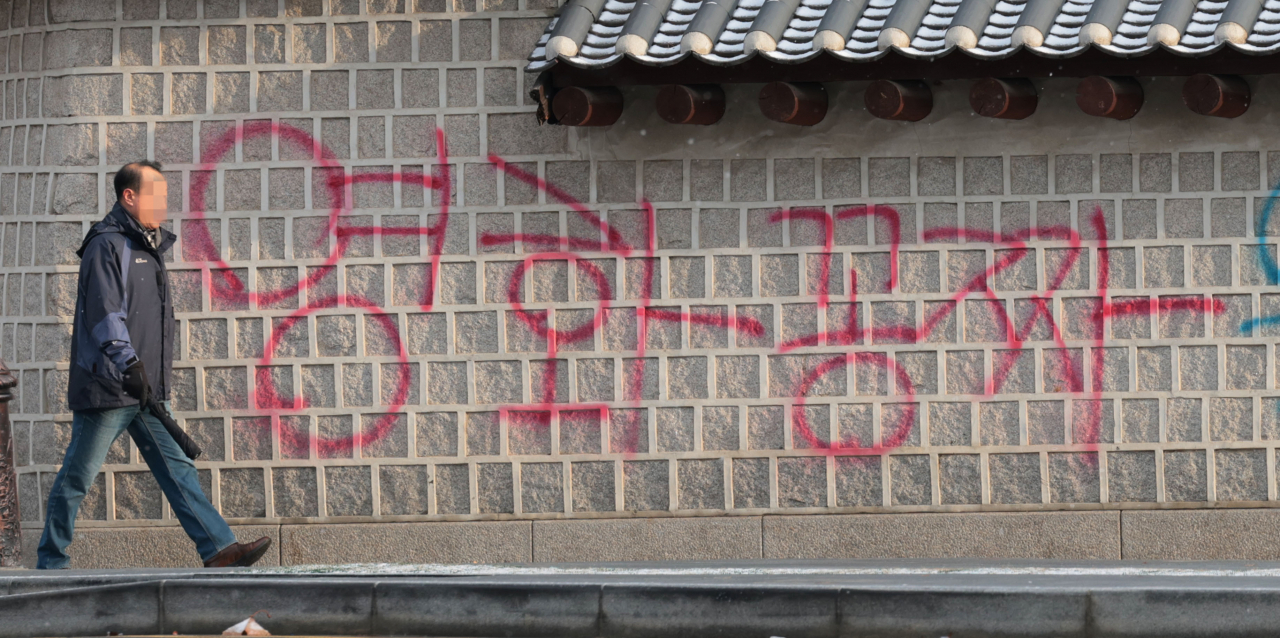
Gyeongbokgung, one of Korea's significant cultural heritage sites, was vandalized with spray paint Saturday.
The police are tracking down the person behind the graffiti that spans some 44 meters of wall.
The incident occurred around 1:50 a.m., when an unidentified suspect wrote graffiti with red and blue spray paint on various sections of the palace, including both the left and right sides of Yeongchumun (The West Gate), and the side gate near the National Palace Museum of Korea, according to Cultural Heritage Administration.
Police received a report around 2:20 a.m., shortly after the incident, and are currently investigating the case using security camera footage.
The suspect repeatedly sprayed the phrase "free movie" in Korean, and phrases that referred to illegal video-sharing sites, in blue. One of the sites is associated with an illegal streaming site that has servers in the Dominican Republic and was shut down in April.
The vandalism is extensive: the writing on the left side of Yeongchumun measures 3.85 meters in length and 2 meters in height, and the right side at 2.4 meters in length and 2 meters in height. The walls surrounding the National Palace Museum of Korea on the left measure 8.1 meters in length and 2.4 meters in height, and on the right, they measure 30 meters in length and 2 meters in height.
Similar graffiti, presumably by the same suspect, was also found on the walls of the Seoul Metropolitan Police Agency, near Gyeongbokgung.
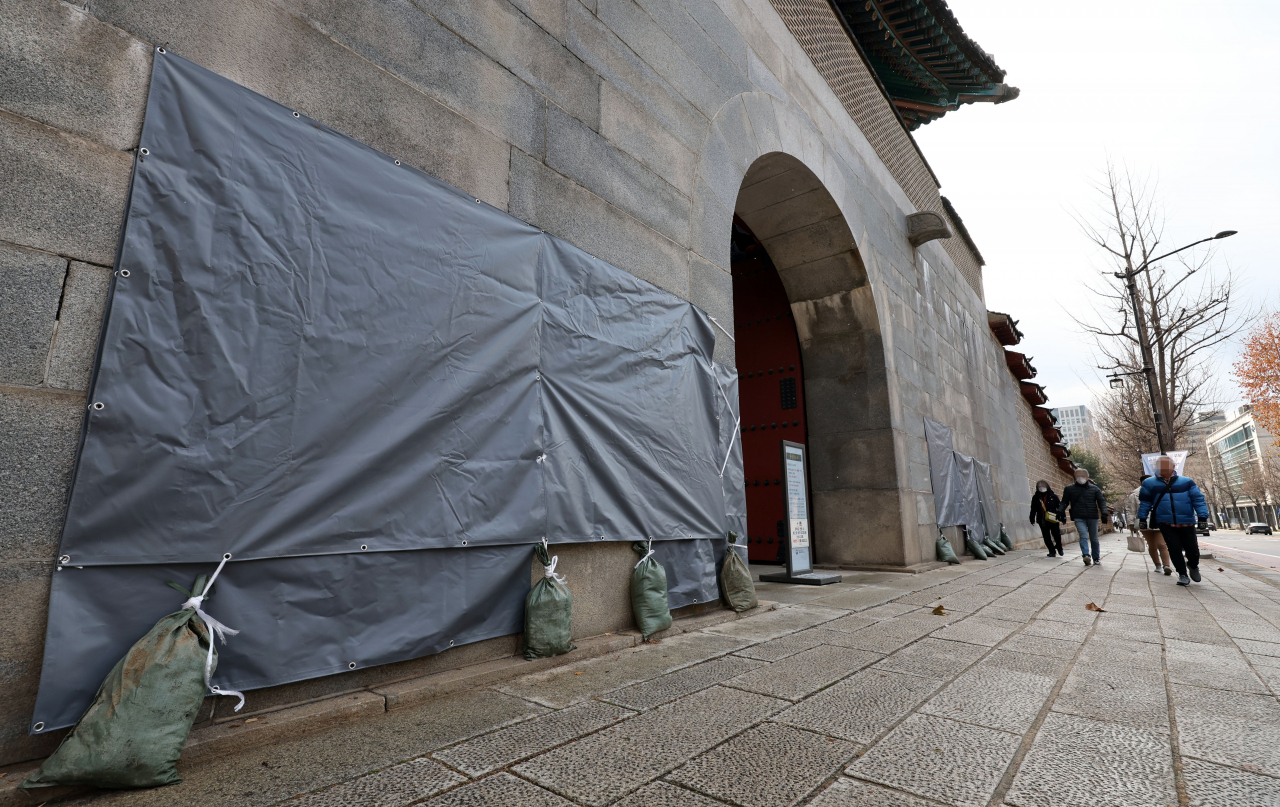
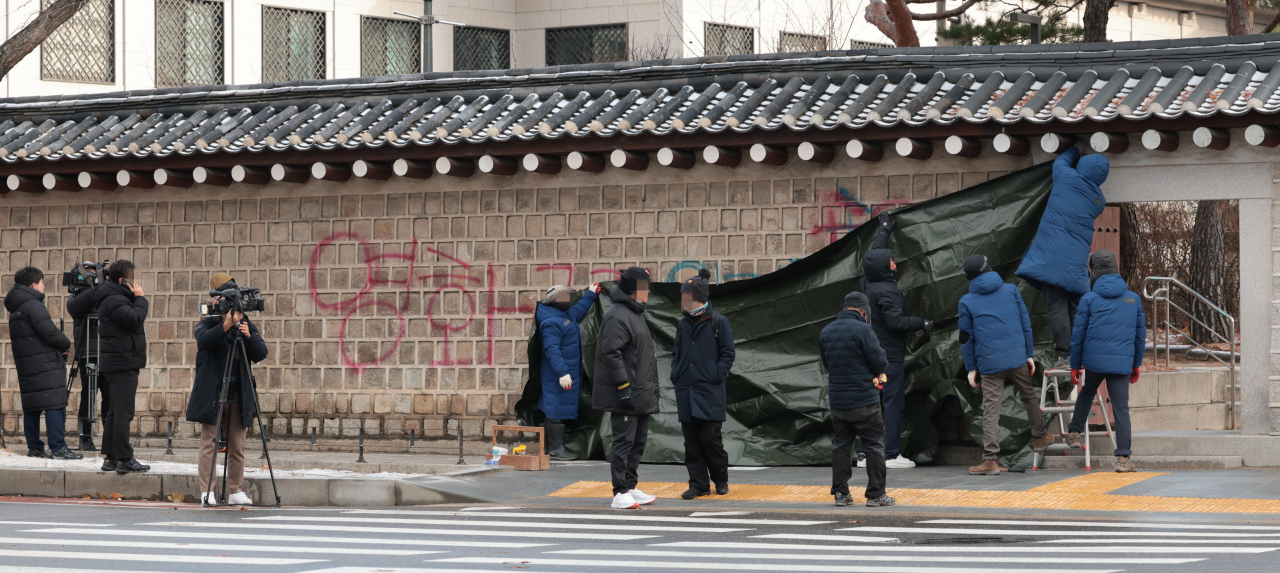
The CHA prompted an immediate response and installed temporary screens to hide the graffiti.
Experts from the National Research Institute of Cultural Heritage, along with other specialists, are assessing the extent of the damage and started working on restoration using appropriate chemicals in the afternoon.
The CHA is reviewing whether they can hold the suspect accountable for violating the Cultural Heritage Protection Act. Its Article 82-3 (Prohibited Acts) bans writing, drawing or carving on designated cultural heritage.
“Gyeongbokgung is a nationally designated cultural heritage site, and the walls of Gyeongbokgung including Yeongchumun, are all included in the scope of historic site designation,” said an official at the CHA, on Saturday afternoon in a statement.
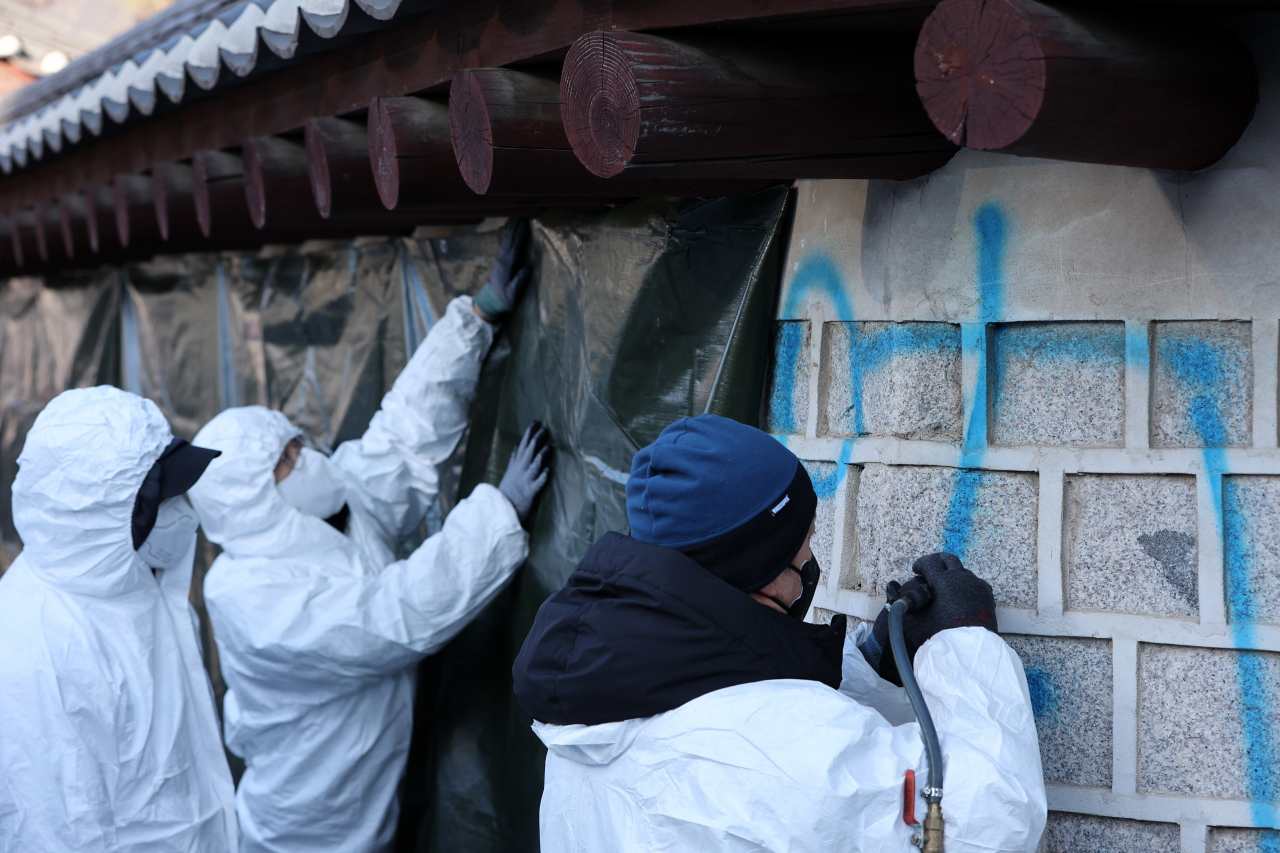
A CHA official told The Korea Herald on Sunday that cleaning up the graffiti would take about a week.
But a challenge arises from the cold weather that has descended on Seoul, with the city experiencing temperatures of minus 12 degrees Celsius on Sunday morning.
The CHA official said the cold weather also limited the amount of time the team could work outdoors on the clean-up.
"We are making efforts to proceed as swiftly as possible, but the weather conditions may cause some delays," he said. “Because it is not rotted or broken, once the spray graffiti is removed, the wall will be restored to its original state.”
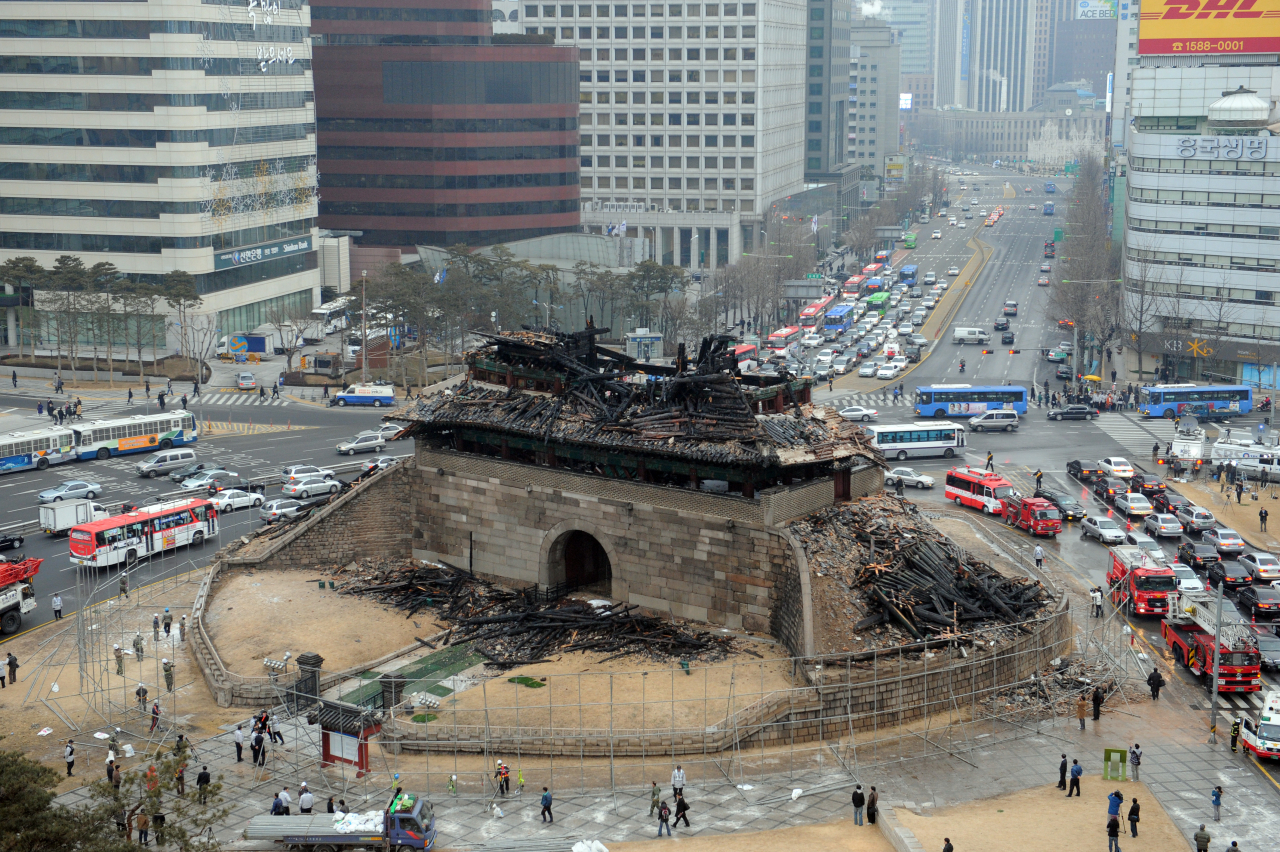
This incident brings to mind the painful memory of Feb. 10, 2008, when another historic treasure, Sungnyemun, also known as Namdaemun, suffered a devastating fire.
Sungnyemun, one of Seoul's four main gates during the Joseon era, overcame the scars of the fire and reopened in May 2013 after five years of restoration.
The arsonist, Chae Jong-gi, 69, who had a previous record of trying to set fire to a royal palace, was later identified and arrested on the day. He was sentenced to 10 years in prison in 2008 and was released from jail in 2018.
Chae said he committed the crime because he was angry at the government for not fairly compensating him in a property dispute.



















